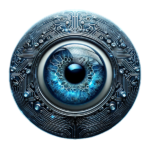Introduction
Artificial intelligence (A.I.) is transforming various industries, and the art world is no exception. A.I. in art creation is opening up new possibilities for artists, designers, and creatives. From enhancing creativity to democratizing art, the benefits of using A.I. in art creation are extensive and impactful. This post explores how A.I. is revolutionizing the art world and the advantages it brings to the table.
Enhanced Creativity and Innovation
Breaking Creative Barriers
A.I. art tools can help artists break through creative blocks by providing new perspectives and ideas. These tools can generate unique patterns, styles, and compositions that might not be conceived manually. By offering endless variations, A.I. encourages artists to experiment and innovate.
Hybrid Art Forms
A.I. enables the creation of hybrid art forms that blend traditional techniques with digital enhancements. Artists can combine their manual skills with A.I.-generated elements to produce artworks that are both original and contemporary. This fusion of styles leads to novel art forms that push the boundaries of conventional art.
Accessibility and Inclusivity
Democratizing Art Creation
A.I. art tools make art creation accessible to a broader audience. You don’t need years of training or advanced technical skills to create stunning artworks. With intuitive interfaces and user-friendly features, anyone can experiment with A.I. art, from beginners to seasoned professionals.
Bridging Skill Gaps
For those who may lack traditional artistic skills, A.I. offers a way to express creativity without the need for extensive training. This inclusivity allows more people to engage in art creation, fostering a diverse community of creators and expanding the reach of artistic expression.
Efficiency and Productivity
Time-Saving
Creating art can be a time-consuming process, especially when it involves detailed work. A.I. tools can significantly speed up this process by automating repetitive tasks and generating complex designs quickly. This efficiency allows artists to focus more on the conceptual and creative aspects of their work.
Scaling Creativity
A.I. enables artists to produce multiple versions of a piece in a fraction of the time it would take manually. This capability is particularly useful for commercial artists who need to deliver high volumes of work. By scaling their creativity, artists can meet the demands of clients more effectively and explore multiple ideas simultaneously.
New Artistic Possibilities
Generative Art
Generative art, created using algorithms and A.I., represents a new frontier in art. This form of art can produce pieces that are entirely unique and often unpredictable. Artists can set parameters and let the A.I. generate patterns, shapes, and colors, resulting in artworks that are both intricate and surprising.
Interactive and Dynamic Art
A.I. allows for the creation of interactive and dynamic artworks that can change in response to viewer interaction or environmental factors. This type of art engages audiences in new ways, making the viewing experience more immersive and participatory.
Collaboration and Learning
Collaborative Creation
A.I. tools can act as collaborative partners for artists. By generating suggestions and variations, A.I. can inspire new directions and ideas, enhancing the collaborative creative process. Artists can iterate quickly, integrating feedback from both the A.I. and human collaborators to refine their work.
Continuous Learning
A.I. tools often incorporate machine learning, which means they improve over time with more data and usage. As artists use these tools, they can learn from the outputs and refine their techniques. This continuous learning loop benefits both the artist and the A.I., leading to more sophisticated and refined artworks.
Conclusion
The integration of A.I. in art creation is not just a technological advancement but a revolution in how we perceive and engage with art. From enhancing creativity and productivity to making art more accessible and inclusive, the benefits are vast and transformative. As A.I. continues to evolve, its role in the art world will undoubtedly grow, opening up even more possibilities for artists and creators.



0 Comments